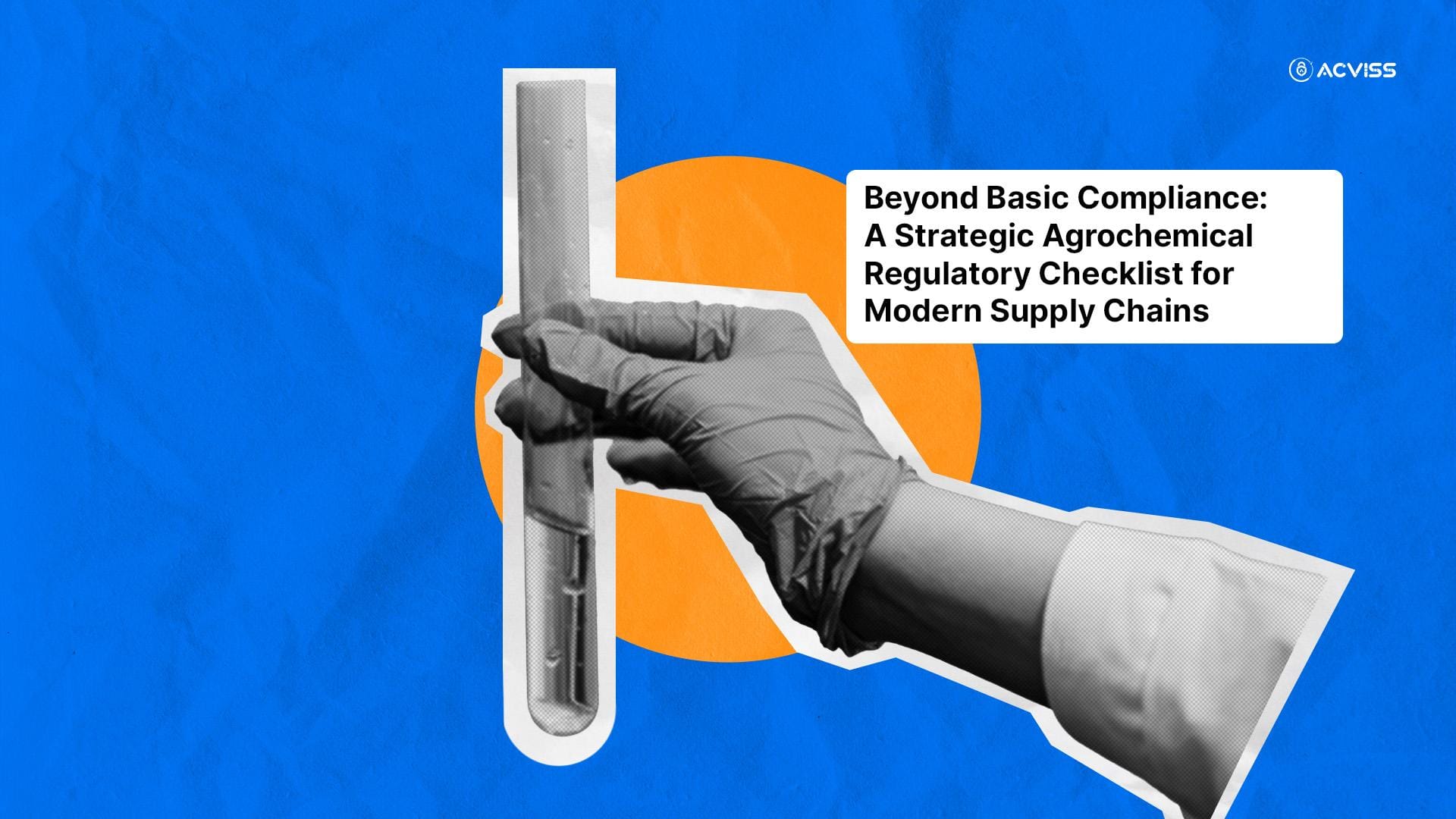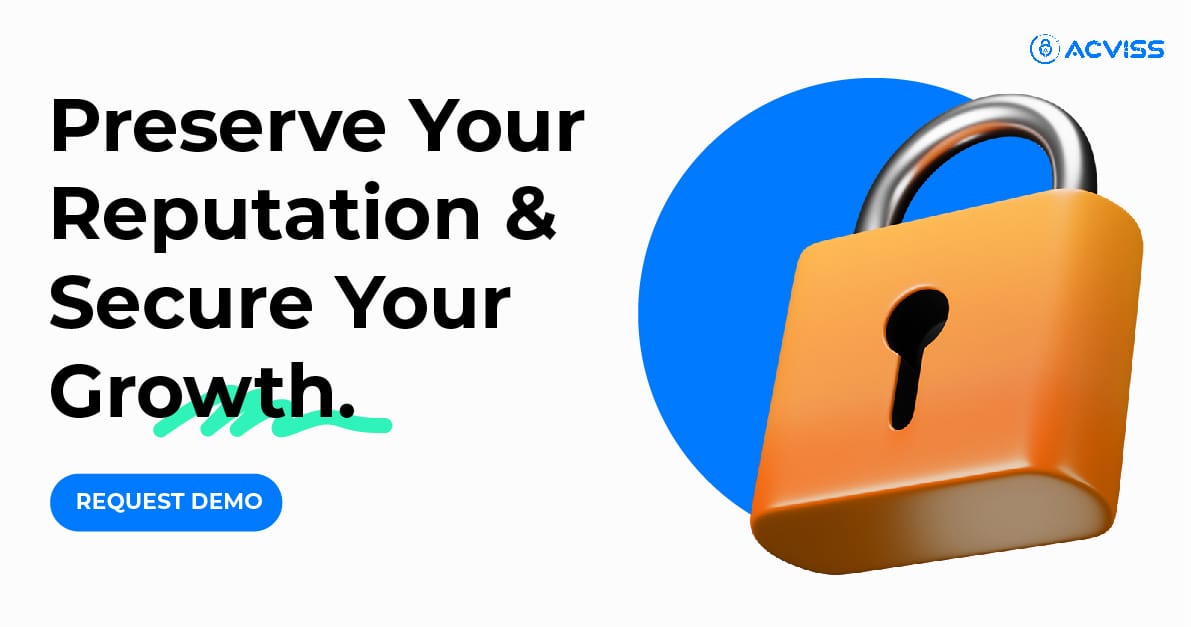Strategic Agrochemical Regulatory Checklist for Modern Supply Chains

In June 2025, India's central government made a move that caught many manufacturers in the agrochemical industry off guard. India’s central government made QR codes mandatory on every insecticide product label. Meanwhile, California banned retail sales of neonicotinoid pesticides starting January 2025. These aren't isolated incidents; they're part of a global regulatory tsunami reshaping the agrochemical industry.
The stakes couldn't be higher. The global agrochemical market, valued at $235 billion in 2024 and projected to reach $282 billion by 2030, faces unprecedented compliance challenges. Companies now are facing average violation fines of $14.8 million, and on the other hand, counterfeiting erodes 10-20% of revenue in emerging markets.
Well, the stats don't end here. 30% of global supply chains are affected by new EU deforestation regulations, and 62% of companies lack adequate traceability systems. So, the question isn't whether to act, it's how quickly you can adapt.
In this blog, we will be navigating 2025's complex regulatory landscape, from EUDR compliance to anti-counterfeiting mandates.
Understanding the Core Objectives of Agrochemical Regulations
Behind every regulation lies a fundamental purpose. Understanding these objectives helps companies build compliance strategies that go beyond box-checking to create genuine value.
1. Food Safety Protection: Maximum Residue Limits (MRL) ensure agricultural products reaching consumers contain safe pesticide levels. Recent studies show that 97% of food samples tested meet these safety standards, but the remaining 3% can trigger market-wide recalls and brand damage.
2. Environmental Protection: Regulations now target water contamination, soil health, and biodiversity preservation. The EU's ambitious goal to reduce chemical pesticide use by 50% and fertiliser use by 20% by 2030 reflects growing environmental consciousness.
3. Worker Safety: To protect agricultural workers and applicators through mandatory protective equipment, application guidelines, and exposure limits. With over 385 million cases of acute pesticide poisoning occurring annually worldwide, these regulations save lives and livelihoods.
4. Consumer Trust: Modern consumers demand to know what's in their food and how it's produced. Clear labelling and traceability systems build confidence and brand loyalty.
5. Market Access: Facilitate global harmonisation by reducing trade barriers while maintaining safety standards. The UN's Globally Harmonised System (GHS) aims to create unified classification and labelling standards, though implementation remains fragmented.
The Evolving Regulatory Landscape: Key Changes in 2025

The regulatory environment is shifting faster than ever. Three major changes are reshaping compliance requirements:
1. EU Deforestation Regulation (EUDR) became effective in December 2024, with full compliance required throughout 2025. This regulation prohibits imports of commodities linked to deforestation, affecting agrochemicals used in soy, palm oil, and other covered crops. Companies must provide geolocation data, conduct risk assessments, and prove no deforestation occurred after December 2020.
2. Digital Product Passport (DPP) preparation begins now for 2027 implementation. Under the EU's Ecodesign for Sustainable Products Regulation, chemical companies must create digital records tracking product lifecycle information. For agrochemicals, this means documenting composition, environmental impact, usage instructions, and disposal methods.
3. India's QR Code Mandate represents the world's largest market implementing mandatory product authentication. Every insecticide label must now include QR codes linking to product information, manufacturing details, and authenticity verification.
4. Enhanced Digital Documentation requirements are spreading globally. The US EPA's Office of Pesticide Program Electronic Label (OPPEL) pilot program aims to replace paper submissions with fully electronic processes. Similar digital-first approaches are emerging across jurisdictions, requiring companies to modernise documentation systems rapidly.
These changes share common themes: increased transparency, real-time monitoring, and digital verification. Companies treating these as isolated requirements miss the integration opportunity.
Current Bans and Restrictions Shaping the Industry
Let’s understand the current and upcoming bans, which will help companies proactively adjust product portfolios.
1. Neonicotinoids face expanding restrictions. California's January 2025 retail ban prohibits consumer sales of products containing imidacloprid, clothianidin, and thiamethoxam, though professional agricultural use continues. The EU maintains outdoor use bans for these substances, while Canada and Australia are reviewing restrictions.
2. Glyphosate restrictions vary by region but trend toward limitation. While the EU renewed approval until 2033, several member states restrict or ban the use. France targets a complete phase-out by 2025, while Germany reduces approved uses. Multiple US states and municipalities ban glyphosate in public spaces. Companies must navigate a patchwork of regional rules.
3. Emerging Restrictions require monitoring. Belgium announced May 2025 restrictions on multiple active ingredients. Brazil reevaluated 47 pesticides in 2024, banning several while restricting others. These country-specific actions create compliance complexity for global companies.
The pattern is clear: substances face increasing scrutiny, with bans following scientific evidence of environmental or health risks. Successful companies anticipate restrictions and develop alternatives before forced compliance.
4. Market Impact extends beyond banned products. Restrictions trigger reformulation costs, supply chain disruptions, and market access challenges. Companies report spending $50-200 million on single active ingredient replacements. However, early movers capturing safer alternative markets often gain competitive advantages.
Essential Compliance Areas Every Company Must Address

Four critical compliance areas demand immediate attention:
1. Supply Chain Traceability & Documentation:
It is non-negotiable. EUDR requires geolocation data for all suppliers, with coordinates accurate to six decimal places. Companies must maintain five years of records and provide real-time monitoring capabilities.
2. Anti-Counterfeiting and Brand Protection:
It is a $5-10 billion annual problem. Fake agrochemicals don't just erode revenues; they damage crops, harm farmers, and destroy brand reputation. India's QR code mandate exemplifies growing authentication requirements. Companies need serialisation systems, consumer verification portals, and grey market detection capabilities.
3. Environmental and Safety Compliance:
Maximum Residue Limits (MRL) vary by crop and region, requiring sophisticated testing and documentation. Worker protection protocols mandate specific application procedures, protective equipment, and exposure monitoring. DPP preparation requires lifecycle environmental impact assessment and sustainability reporting frameworks.
4. Labelling and Market Access Requirements:
It multiplies across jurisdictions. The US requires bilingual labelling for certain toxicity classes. EU labels must include authorised uses, dose rates, and hazard warnings per CLP regulations. Digital submission processes are replacing paper-based systems, requiring new workflows and validation procedures.
Integration across these areas creates synergies. Traceability systems supporting EUDR also combat counterfeiting. Digital labelling workflows streamline multi-jurisdictional submissions. Companies viewing these as connected challenges rather than separate requirements achieve better outcomes with lower costs.
Your 2025 Regulatory Compliance Checklist
Transform regulatory complexity into actionable steps:
Immediate Actions (Q4 2025):
- Conduct substance restriction audit - Review product portfolios against current and announced bans. Identify phase-out timelines and replacement strategies.
- Implement product authentication - Deploy QR codes or similar unique identifiers on all products. Ensure codes link to verified product information and authenticity verification.
- Establish supplier geolocation data collection - Begin gathering GPS coordinates for all raw material suppliers. Focus on EUDR-covered commodities first, then expand comprehensively.
- Launch deforestation risk assessments - Use satellite imagery and geofencing tools to verify no deforestation in supplier areas after December 2020.
- Upgrade labelling compliance - Audit all product labels against current requirements. Begin the digital submission process adoption where available.
Medium-term Preparations (2025-2026):
- Deploy comprehensive track and trace systems - Implement end-to-end supply chain visibility from raw materials to end consumers. Ensure real-time monitoring capabilities.
- Develop grey market detection protocols - Create systems to identify unauthorised product distribution. Monitor online marketplaces and distributor networks for compliance.
- Establish digital audit trail capabilities - Document all compliance activities with timestamp verification and secure storage. Prepare for regulatory inspections.
- Build real-time compliance monitoring - Implement automated systems flagging regulatory changes, compliance deadlines, and risk indicators.
- Execute comprehensive team training - Educate teams on evolving requirements, new documentation standards, and emergency response procedures.
Strategic Preparations (2026-2027):
- Prepare DPP implementation infrastructure - Begin collecting lifecycle data, environmental impact assessments, and sustainability metrics required for Digital Product Passports.
- Enhance blockchain integration capabilities - Evaluate and implement blockchain solutions for tamper-proof compliance records and supply chain verification.
- Develop consumer verification portals - Create user-friendly systems allowing consumers to verify product authenticity and access compliance information.
- Build comprehensive sustainability reporting - Establish frameworks for measuring and reporting environmental impact, supporting both compliance and market positioning.
Success requires viewing this checklist as interconnected rather than sequential. Early blockchain implementation supports both current traceability needs and future DPP requirements. Consumer verification portals address anti-counterfeiting while building brand trust.
Leveraging Technology for Seamless Compliance

Companies relying on manual processes face inevitable compliance failures and competitive disadvantages. A smart way in today’s time is certainly leveraging technology.
Let’s see how companies can do that.
Integrated Compliance Platforms:
Rather than managing separate systems for different regulations, leading companies deploy unified platforms addressing multiple requirements simultaneously. These systems combine geofencing for EUDR compliance, serialisation for anti-counterfeiting, and blockchain for audit trails.
Real-time Monitoring Capabilities:
Automated systems track regulatory changes across jurisdictions, flag approaching deadlines, and identify risk factors in supply chains. Companies using these systems report 95% improvement in compliance accuracy compared to manual processes.
Predictive Analytics:
Machine learning algorithms analyse regulatory patterns, identifying likely future restrictions and enabling proactive product development. Early adopters gain 12-18 months of advantages in market positioning.
Consumer-Facing Technology:
QR codes and mobile verification apps allow consumers to authenticate products, access safety information, and report suspicious items. These tools transform compliance requirements into brand differentiation opportunities.
💡Companies implementing comprehensive digital compliance solutions report:
within two years. |
Origin by Acviss: Comprehensive Digital Compliance Solution for Agrochemical Companies
For agrochemical companies struggling with fragmented compliance systems, Origin by Acviss provides an integrated platform addressing your most pressing regulatory challenges.
Keep reading to see how Origin by Acviss can help agrochemical industries with regulatory compliance.
Origin combines essential compliance capabilities in one solution: Real-time supply chain traceability with geofencing for EUDR compliance, blockchain-secured authentication preventing counterfeiting, and comprehensive audit trails supporting regulatory submissions.
Over 80 brands and 100 million consumers already trust ACVISS solutions globally.
Proven results speak clearly: Companies using Origin report a 60% reduction in counterfeit incidents and a 95% improvement in supply chain visibility. The platform has protected over 2 billion products while helping companies navigate complex multi-jurisdictional requirements.
For agrochemical companies specifically, Origin addresses your unique challenges: Track active ingredients from synthesis to application, verify supplier geolocation data for EUDR compliance, enable consumer authentication through QR codes, and maintain five-year audit trails meeting regulatory standards.
The platform scales with your needs. Whether you're managing regional distribution or global supply chains. Integration typically completes within 8-12 weeks, providing immediate compliance improvements while preparing for future requirements like DPP implementation.
Read our case studies about Origin implementation across industries
Common Compliance Pitfalls and How to Avoid Them
Learning from others' mistakes accelerates your compliance journey:
- Underestimating implementation timelines causes the most failures. EUDR geolocation data collection requires 6-12 months for complex supply chains. Companies starting in Q4 2025 face serious compliance risks. Begin immediately.
- Treating regulations as isolated requirements multiplies costs and complexity. EUDR, DPP, and anti-counterfeiting requirements share common technological foundations. Integrated approaches achieve better results with lower investments.
- Inadequate documentation systems create audit vulnerabilities. Regulatory inspectors expect comprehensive, timestamped records with clear custody chains. Manual spreadsheets and email-based systems fail under scrutiny.
- Ignoring supplier compliance capabilities creates bottlenecks. Your compliance depends on supplier cooperation and technical capabilities. Assess supplier readiness early and provide necessary support or alternatives.
- Focusing only on current requirements leaves companies unprepared for emerging regulations. DPP implementation begins in two years, but infrastructure development requires longer timelines. Strategic companies begin preparation now.
Success requires treating compliance as an ongoing business capability rather than periodic projects. Companies investing in robust, integrated systems navigate regulatory changes more successfully while capturing competitive advantages.
Conclusion
The agrochemical industry faces unprecedented regulatory complexity, but this challenge creates an opportunity for companies willing to act decisively. The companies that thrive will be those treating these requirements as integrated business capabilities rather than compliance burdens.
The choice is clear: React to each regulation separately with fragmented solutions, or build comprehensive compliance capabilities, creating competitive advantages. Early movers benefit from improved supply chain visibility, enhanced brand protection, and stronger customer relationships.
It is time to take action and convert this regulatory complexity into a competitive advantage. Your compliance strategy determines your market position for the next decade.
Ready to take control of your supply chain? See how Origin can help you achieve end-to-end traceability and protect your brand from counterfeits. Book a quick call today.
